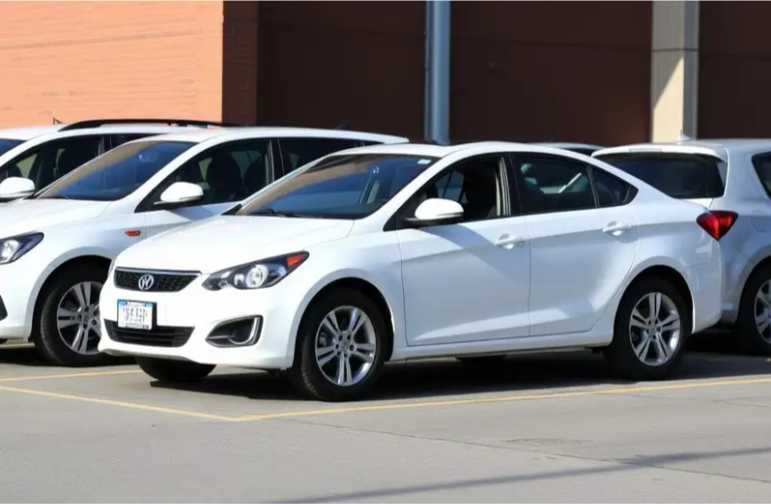
What Is Comprehensive Auto Insurance?
Comprehensive auto insurance is often misunderstood. Many people assume it means “full coverage,” but technically, it only covers non-collision-related damages to your vehicle. That includes:
Theft
Vandalism
Fire
Natural disasters (hail, flood, storm damage)
Falling objects (tree branches, debris)
Animal collisions (e.g., hitting a deer)
Glass breakage (windshield damage)
In simple terms, comprehensive insurance protects your car from unexpected events that don’t involve another vehicle.
Important Note: Comprehensive insurance does not cover injuries, liability to others, or collision damage with other vehicles. Those are covered by liability and collision insurance, which are separate.
Why Comprehensive Insurance Might Be Right for You
Not every driver needs comprehensive coverage, but for many, it’s a smart investment. Here’s when it makes sense:
You live in an area with high crime or theft
Comprehensive coverage protects against car theft, break-ins, or vandalism—common in dense urban areas.
You park your car outside
If your car is exposed to the elements, the risk of weather-related damage (hail, flood, wind) increases.
Your car is still worth a lot
If your vehicle is newer or has a high market value, it’s worth protecting against non-collision threats.
You’re still making payments on your car
If you’re financing or leasing, your lender likely requires comprehensive insurance as part of full coverage.
How Much Does Comprehensive Auto Insurance Cost?
The average cost of comprehensive coverage in the U.S. is around $160 per year, but this varies based on:
| Factor | How It Affects Price |
|---|---|
| Location | More theft or severe weather = higher rates |
| Car Type | Expensive or high-risk cars cost more to insure |
| Driving History | Safe drivers get better rates |
| Deductible | Higher deductible = lower premium |
| Bundling Policies | Buying home and auto together may reduce cost |
It’s important to compare rates because prices can vary dramatically between providers for the same coverage.
The Best Way to Buy Comprehensive Auto Insurance in the U.S.
Now let’s get to the heart of it: how do you actually find and buy the best comprehensive insurance? Here’s a 7-step strategy that works for most drivers:
Step 1: Know What Coverage You Really Need
Before shopping, decide:
Do you want only comprehensive, or full coverage (liability + collision + comprehensive)?
What deductible can you afford? ($250, $500, $1,000?)
A lower deductible means higher premiums but less out-of-pocket after an incident. Higher deductibles reduce monthly cost but require more money if you file a claim.
Step 2: Gather Basic Information
You’ll need:
Your driver’s license
Vehicle details (year, make, model, VIN)
Current mileage
Garaging address
Driving history (past accidents, tickets)
Having these ready speeds up the quote process and ensures accuracy.
Step 3: Use Online Comparison Tools
Don’t just go to one insurance company. Use reputable comparison websites like:
The Zebra
NerdWallet
Insurify
Compare.com
These platforms let you see multiple quotes side-by-side, often in less than five minutes.
Pro Tip: Run quotes with different deductibles and see how it affects the price.
Step 4: Evaluate the Insurer, Not Just the Price
Price matters—but service matters more when you need to file a claim. Before you buy:
Check ratings on sites like J.D. Power, AM Best, and Better Business Bureau
Look up customer reviews about claims handling
Ask about repair shop networks, glass replacement options, and rental car coverage
Choose a company known for reliable payouts and good customer service, not just low premiums.
Step 5: Bundle or Ask for Discounts
Most insurers offer multi-policy discounts if you combine auto and home or renters insurance. Also ask about:
Good driver discounts
Anti-theft device discounts
Paperless billing or autopay discounts
Low-mileage discounts
Stacking discounts can reduce your bill by up to 25%.
Step 6: Read the Fine Print
Don’t skip this. Review:
Exclusions (What’s not covered?)
Claim process (How easy is it to file and get reimbursed?)
Payout limits (Is there a cap for certain types of damage?)
If you have questions, call the insurer before you commit. It’s better to ask now than be surprised later.
Step 7: Review Your Coverage Annually
Insurance isn’t “set it and forget it.” Your vehicle’s value drops over time, and your driving habits may change. Set a calendar reminder to:
Re-shop your policy every 12 months
Adjust coverage as needed (drop comp if your car is worth very little)
Check for new discounts or better deals
Loyalty doesn’t always pay in the insurance world—comparison shopping annually saves money.
Common Mistakes to Avoid When Buying Comprehensive Insurance
Buying based on price only
Assuming all companies offer the same coverage
Ignoring deductibles and payout limits
Not reading the exclusions
Failing to report changes (like a new job or address)
Avoiding these can save you hundreds—and major headaches—later on.
Final Thoughts: Smart Protection Starts with Smart Choices
Buying comprehensive auto insurance doesn’t have to be overwhelming. With a clear plan, a bit of research, and a willingness to compare your options, you can protect your vehicle without overpaying. Whether you’re driving a brand-new SUV or an aging sedan, the peace of mind that comes with proper coverage is worth every penny.
